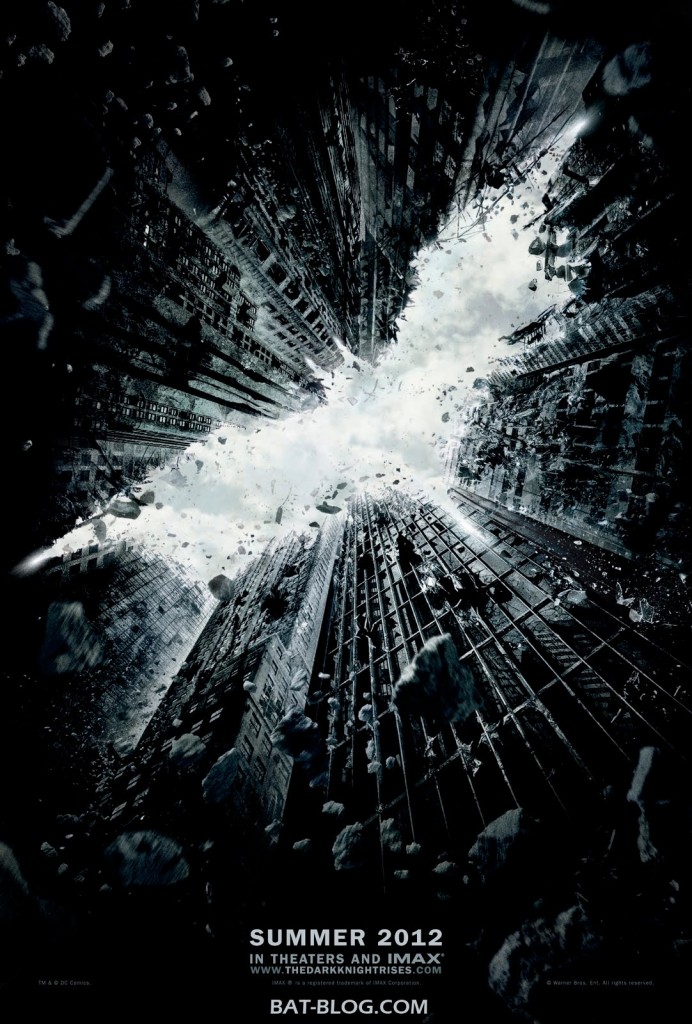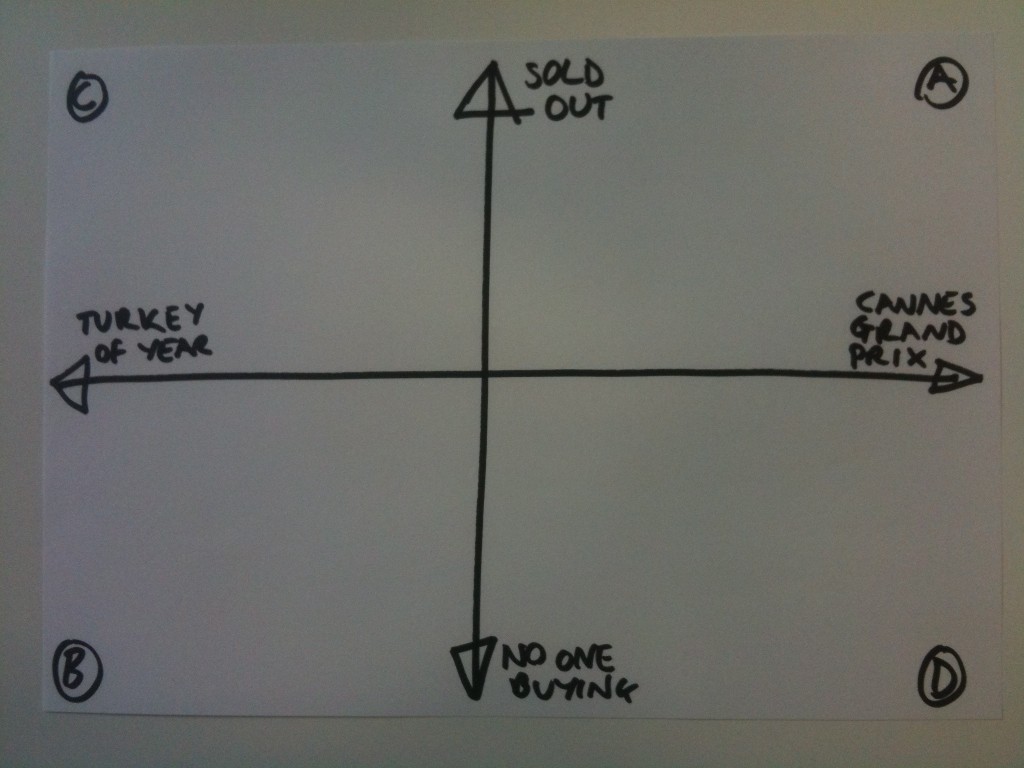One swallow does not a bummer change
I had a chat with Mark Denton yesterday.
For some reason I thought his early-nineties uberagency, Simons Palmer Denton Clemmow and Johnson, was a massive hit from the second it opened its doors.
Mark soon disabused me of this notion, explaining that they were fuelled by the not very massive budgets of Greenpeace and Luncheon Vouchers (do they still make those?) for ages until Nike arrived in the middle of year four.
Then they started making ads like this:
http://www.youtube.com/watch?v=3a35Sz2z2pQ
And went on to win awards for (I quote Mark) 87% of their clients, creating my impression of SPDC&J as an agency of great success.
This led me to ponder agencies and how their most famous image dominates any other time in their history.
For example, VCCP has been producing a fair amount of award-winning work for the last few years. However, most still think of it as the dull O2 place of the mid 2000s whose first boast on its website was that its work would always be produced on time.
Equally, when I freelanced at Lowe a couple of years ago I simply could not get it out of my head that this was the great home of Stella, Reebok, Tesco and the like. It had changed somewhat (for a start, none of those accounts were there), but for me it was still Lowe.
Grey are better than they used to be, but for many they are still Grey in name and nature. McCann’s produced some great work a few years back, but they were still thought to be crappy old McCann’s (and seem to have returned to that state). Despite wonderful work for Citroen and Dulux Euros remains in my mind as a place that is large, boring and poor.
I remember David Abbott once saying that you can live for three years off a good piece of work. When the 1000 days are up you’d better have produced another cracker, or people will start to think it’s a fluke.
I think that rule holds for many other impressions, particularly our first ones.
We compartmentalise brands, people, agencies etc. because it makes life easier, but that also means it’s hard to shunt any of these from one compartment to another.
An interesting lesson for any start-ups out there.
Feel the fear and do it anyway.
A marine has asked Mila Kunis out via YouTube:
Of course the odds were long, but that soldier remembered the old maxim: you miss 100% of the shots you don’t take.
The vast majority of us live somewhat contracted lives because we don’t want to take little chances that might make us look a bit silly.
Well, Sergeant Scott Moore couldn’t give a shit about any of that, and now he’s going to the ball with Mila Kunis.
I bet you’ve got your own ‘Mila Kunis’ (maybe it’s Mila Kunis) and your own ‘ball’.
So what are you waiting for?
The News of the world scandal and mission statements
I’m sure you’ve read enough about the current goings-on at the NOTW to choke a hippo, but can I arrogantly suggest this angle may differ from the others?
What interests me is the defence of the current NOTW as a well-intended bastion of investigative reporting.
Leaving aside the question of whether or not Shane Warne + Liz Hurley is actually worth investigating, the whole stance is comepletely disingenuous.
The News Of The World exists for one reason alone: to sell copies of the News Of The World (and, by extension, make money for News International/Rupert Murdoch). They can’t claim to have had a mission of seeking out and exposing corruption (eg: Jeffrey Archer paying a hooker) because they ignored their own; they can’t claim to speak for the disadvantaged (eg: campaigning for compensation for 7/7 victims) because they hounded at least two to suicide:
And if there is no consistent thread of motivational behaviour for this newspaper, other than the making of money, then their campaign to expose paedophiles rings rather hollow. If their readers didn’t really care about that issue then the NOTW would not have pursued the matter. It’s just another attempt at providing something that they think people want to read about. It’s as deeply ingrained in their raison d’etre as Rebecca Loos wanking off a pig, a picture of Michael Jackson’s deathbed or whatever they learned from the voicemail of a murdered schoolgirl.
And that’s a dangerous path to go down: you ask the question, ‘Will this sell us lots of copies?’, and if the answer is ‘Yes’, you do it, no matter if it’s illegal, immoral or indefensible.
Many companies have a mission statement for how they go about their business. But is it the truth, or is it what they want their customers to think is the truth?
I think that we’d find, depressingly often, that the latter is more often the case than the former.
weekend
And here’s a handy way to make everything OK (thanks, W).
The excellent blog of advertising’s Gerry Graf (thanks, P).
And Wheel of Concept from Tribal.
The AIDS diet plan:
Put a twang of salt on a sweet melon and it brings out accent:
Great Taxi Driver article (thanks, J).
Kevin Smith on Prince:
http://www.youtube.com/watch?v=Gy_cLJ19HMg
Advertising explained in a simple diagram
I went round to see my friend Stephen Gash the other day (interest declared: he’s a friend. Also, he runs an excellent production company called QI Commercials that is related to the QI that seems always to be on Dave and Dave + 1) and he drew me this diagram:
On the x axis we have creativity, ranging from Turkey of the Year to Cannes Grand Prix (or whatever measure you want to use).
On the Y axis we have what is now described as effectiveness: how much product is the ad shifting (I know it’s not always about shifting products, but you know what I mean).
So point A is where we all want to be: massive success for both agency and client. I guess the stories often get muddied, but I would suggest ads like Swimblack, Cog and Gorilla belong up there.
Then there’s point B: the exact opposite. A shitty ad that gets no one buying anything. I’d cite examples, but the thing is, we probably have no idea of the real failures because they just pass us by without making any kind of an impact. The actively awful ones tend to get talked about, and that can then equate to big sales, bringing us to…
Point C: the shit ads that shift product. Cillit Bang, Esure, Go Compare etc.
And then there’s point D: the award winner that doesn’t work. Bill Bernbach said, ‘A great ad campaign will make a bad product fail faster. It will get more people to know it’s bad.’ So that happens at point D, as does the rarer phenomenon of highly awarded ads that leave the public cold.
Stephen went on to explain that at points B and D the agency, and possibly the client, will get fired. At point C the agency might resign the account or, more likely, try to pretend they didn’t do it whilst continuing to trouser the cash of a happy client. And at point A it’s all Champagne and crack binges a-go-go.
So really, the only thing that matters in keeping an account is a happy client, which is why so much agency effort these days goes into achieving that result.
After all, you can’t play football without a ball (or something).
The News of the world are a bunch of shitbags etc.
As I’m sure you’re aware, allegations have been made that investigators working on behalf of the News of the World hacked into Milly Dowler’s voicemail and wiped some of her voicemails, hampering the investigation into her disappearance.
Jesus shitting Christ.
I suppose we’ll now have all the bullshit from the people who were in charge at the time, suggesting that they could not possibly have known that these methods were being used. That they had absolutely zero fucking idea that this was the method by which they acquired a huge number of their stories. That a NOTW story about Milly Dowler could mention knowing what was on her voicemail without that being a cause for alarm.
‘How come you know what’s on her voicemail? Surely that’s the kind of information only Milly herself could know.’
‘Ummm, we um… er… Oh look! Cheryl Cole’s beaten up a toilet attendant!’
‘Shit! Hold the front page!’
Innocent until proven guilty and all that, but I think it says plenty about the newspapers involved that most people find it quite believable that this happened.
Anyway, while we wait for all the denials and protestations, you can make your own mind up. And if by some chance you think there might be some truth in the allegations, you can always let the NOTW know how you feel.
UPDATE: Mainly due to this post, the News Of The World is now dead.
Interesting post on how the end of conflict is killing advertising
I agree with what he’s saying, but there are so many other factors involved:
1. Money. Of course people in advertising have always wanted it, but now it is the sole imperative for the vast majority of decision makers in the industry. The rise of the holding companies, who only tolerate creativity as a means to a financial end, has stifled those parts of the business where the magic happens. You need a bit of indulgent wiggle room to let talent breathe, but that is a grey area that is impossible to quantify. As a result, the leash is let out only so far and the ads stay just that bit safer.
2. Vicious circles. …And when the ads get a bit safer, they get a bit safer than that, then a bit safer still and on and on… If the gold standard of Ker-azy Kreativity is 20% duller than last year, then most agencies will work another 20% below that. Risks cost cash, so let’s have no more of the pesky things.
3. Globalisation. The more people you aim at, the less accurate your aim. If you have to hit 500,000,000 people who speak fifty different languages and have infinite cultural differences between them, one message will manage a 6/10 reaction from most of them but nothing more. But now, thanks to that financial imperative, consolidation and globalisation is where it’s at. Otherwise the shareholders might get a penny less in the dividend and the man at the top of the enormous corporation might earn a seven figure bonus instead of eight.
4. The talent drain. Either out of the country, out of the industry, many of the most creative people no longer see advertising as a job that will allow them to express themselves in a way that is properly fulfilling. If you spent your day making Drugstore, Surfer or Cog, you’d rightly feel pretty pleased with yourself and would happily pour every ounce of your thinking into the next ad opportunity. But now it seems pretty obvious that great ads are much fewer and further between (partly due to budget cuts). In addition, we now have excellent people working in the industry who get their creative kicks outside it. They know there is no chance of greatness in the day job, so they pour skill and intelligence that they would once have used for ads into some other project. And the ads get worse, and the circle gets more and more vicious.
5. The downgrading of creative status: relatively far less pay is one thing (in real terms, top creatives are paid 8 times less than they were in the eighties), but now CDs are mere employees, hired by the financially-minded people higher up the chain to produce something, anything that they can charge for. Is it good, or is it great? Who knows and who cares, as long as the money is coming in. Go Compare is a massive success, so why beat ourselves up trying to make Sony Balls? Why indeed…
So some fear of conflict might be a factor, but it’s a small part of a bigger story.
I’m not sure why this won a Cannes gold
When these won a silver:
http://www.youtube.com/watch?v=s4KE_9BVbFg
Archives


